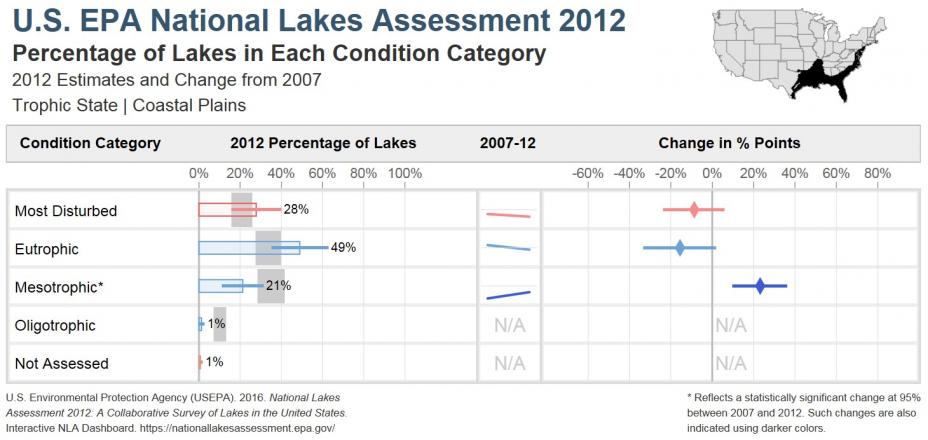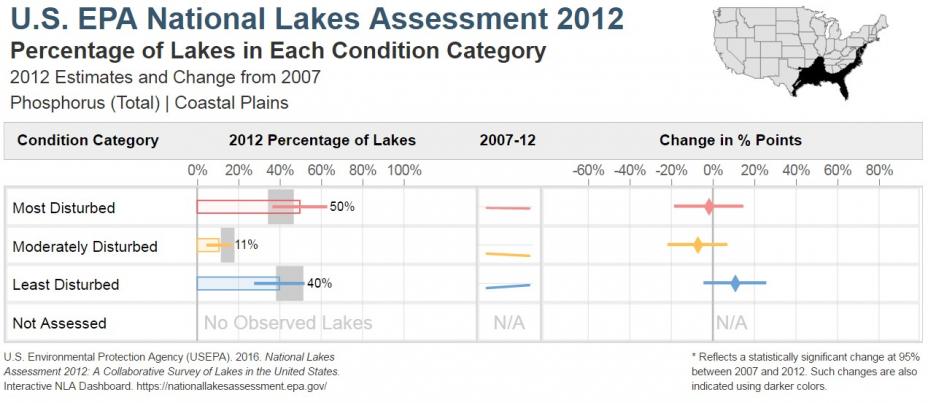Coastal Plains Ecoregion - National Lakes Assessment Results
Key Results
A total of 24,928 lakes in the Coastal Plains ecoregion are represented in the National Lakes Assessment (NLA). Of these lakes, 26% are natural and 74% are man-made.
The NLA uses trophic state as an important indicator of lake condition and assesses the extent of key stressors in the nation’s lakes.
- In the Coastal Plains, 28% of lakes are rated as most disturbed based on trophic state, 49% are eutrophic, 21% are mesotrophic, and 1% are oligotrophic.
- The most widespread stressors assessed are phosphorus (50% of lakes), lake habitat complexity (37%), and nitrogen and riparian vegetation cover (both 33%).
Trophic State

Indicator with the Highest Percentage of Lakes in the Most Disturbed Condition: Phosphorus

 Lake sampling in Texas for the NLA 2012. Photo: Texas crew.
Lake sampling in Texas for the NLA 2012. Photo: Texas crew.
Human Use Condition
Cyanobacteria is one of three algal toxin related indicators assessed in the NLA (see also chlorophyll a and microcystins). It serves as a proxy for the presence of algal toxins.
- Based on cyanobacteria cell counts, 23% of lakes in the Coastal Plains are in the most disturbed condition (i.e., pose a high risk of exposure to algal toxins).
Change from 2007 (for lakes >4 hectares)*
- For the Coastal Plains, no indicators showed a significant change in most disturbed condition between 2007 and 2012
To access more indicator graphics please visit the interactive NLA Dashboard.
* The change analysis is based on information from two points in time – 2007 and 2012. The change in condition analysis only considers lakes 4 hectares and larger because smaller lakes were not sampled in 2007.
